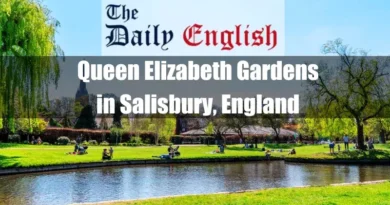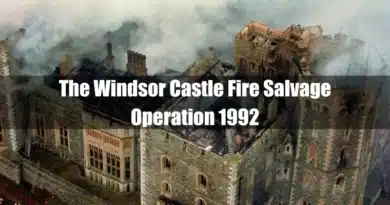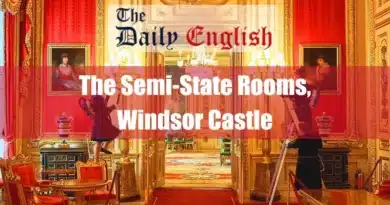Windsor Castle, one of the most iconic royal residences in the United Kingdom, is a symbol of the British monarchy and a masterpiece of architectural evolution. Among the castle’s many features, the Grand Staircase stands out as a significant architectural and historical element, particularly due to its association with the State Apartments. This staircase, located in the Upper Ward of Windsor Castle, was integral to the ceremonial and functional aspects of the castle.
Historical Context and Architectural Significance
The Grand Staircase, as depicted in a watercolour prepared for William Henry Pyne’s History of the Royal Residences (1816-1819), is a fine example of the Gothic revival style prevalent in the late 18th and early 19th centuries. Pyne’s publication spans three volumes and includes 100 hand-coloured engravings of various royal residences, including Windsor Castle. These engravings were based on original watercolours preserved in the Royal Library. The watercolours are the exact size of the images on the printed plates, suggesting they might have served as colour guides for the artists responsible for hand-painting the monochrome prints.
The watercolour staircase is in the Upper Ward of Windsor Castle, specifically designed to lead visitors from the State Entrance in the northern range of the Quadrangle to the State Apartments above. This design was part of the broader architectural changes undertaken at Windsor Castle during the reign of King George III.
James Wyatt’s Architectural Contributions
Around 1800, James Wyatt, a prominent British architect, was commissioned to undertake significant renovations at Windsor Castle. One of his key projects was the introduction of a new staircase to replace the old King’s and Queen’s Stairs. The original King’s Stairs, which opened from the east end of Horn Court to the north-east of the State Entrance, was demolished. Similarly, the old Queen’s Stair, located immediately to the north of the entrance, was replaced by Wyatt’s new staircase, which occupied the same space but provided access to both the King’s and Queen’s Apartments.
Wyatt’s architectural scheme was bold and innovative. The new staircase was oriented along a north-south axis and featured a single flight of stairs with a landing midway, leading from the Entrance Hall to a landing outside the King’s Drawing Room on the floor above. This staircase was more than just a functional element; it was a statement of architectural grandeur. Above the new stairs, Wyatt introduced a high octagonal lantern, nearly 100 feet (30 meters) above the floor level. This lantern was ornamented with Bernasconi’s Gothic plasterwork, which complemented the Gothic vaulting of the Entrance Hall below.
The Visual Representation in Pyne’s Work
The watercolour in question offers a vivid depiction of this grand architectural feature. The image shows a vaulted ceiling on the ground level, supported by fluted pillars, leading to a flight of stairs. Three figures are seen standing at the top of the stairs, which are thought to lead to a significant room, possibly the King’s Dining Room, though the specific destination is not explicitly identified in the artwork.
This staircase, as captured in Pyne’s work, not only serves as a functional connection between different parts of the castle but also exemplifies the Gothic revival aesthetic that was championed by Wyatt. The intricate plasterwork and the soaring lantern above the staircase indicate the attention to detail and the desire to create a space that was both imposing and reflective of the Gothic style revived during this period.
Conclusion
The Grand Staircase of Windsor Castle, as designed by James Wyatt, is a testament to the architectural innovation and the historical significance of Windsor Castle during the late 18th and early 19th centuries. The staircase facilitated movement within the castle and served as a symbol of the influential Gothic revival style during this period. The watercolour prepared for Pyne’s History of the Royal Residences offers a valuable visual record of this important architectural feature, capturing its functional purpose and aesthetic grandeur.










Comments are closed.